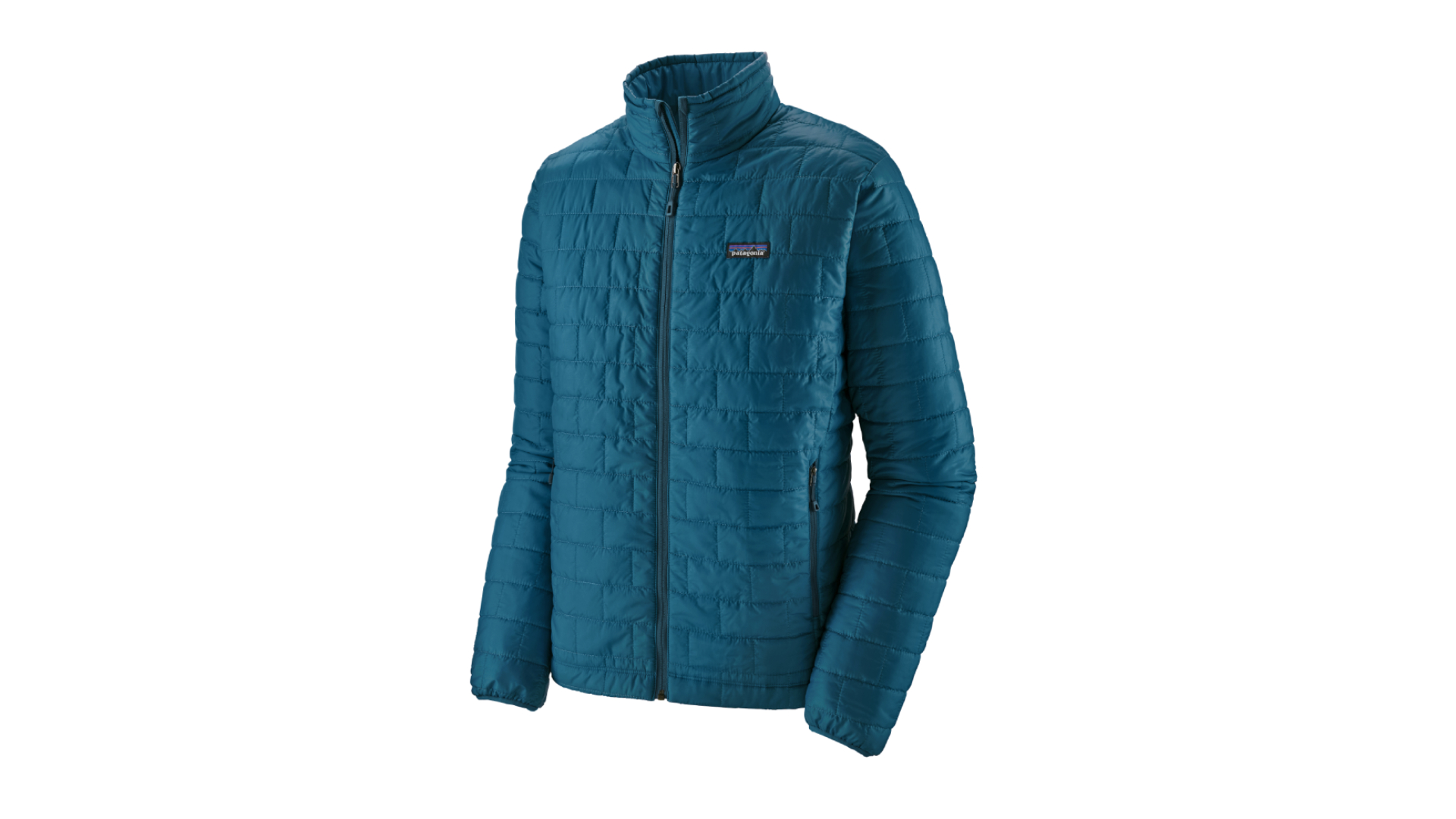Advnture Verdict
A tried-and-tested favourite, whether we’re out in the wilds or going wild at the pub, post adventure, the Patagonia Nano Puff PURE jacket delivers in every department, from performance to style, while the Patagonia label ensures you’re supporting the highest ecological standards in the industry.
Pros
- +
Synthetic fill is quick-drying and provides warmth even when wet
- +
Very packable
- +
Great eco credentials
Cons
- -
No longer the lightest or warmest layer synthetic around
- -
Brick-quilt patterning means lots of stitching = potential snagging
You can trust Advnture
First impressions
The Patagonia Nano Puff PURE jacket, with its distinctive brick-quilt patterning, is a staple of the outdoor scene in the UK, the US and beyond. And though the latest version may not look all that different to previous generations, there’s been a major change to the fill – driven, as we might expect (this is Patagonia, after all), by concerns about sustainability.
As such, the jacket now employs PrimaLoft’s innovative 100% postconsumer recycled polyester insulation made with P.U.R.E. (Produced Using Reduced Emissions) technology. It’s still the same high-performance 60gm PrimaLoft Gold Eco, but with even less impact on the environment.
That eco-friendly fill is wrapped in a 100% recycled polyester shell and lining, and the jacket is also Fair Trade Certified sewn. Impeccable green credentials and no drop in performance, with all the benefits that synthetics provide – what’s not to like?
- We run down the best down jackets and puffers you can buy right now
- It's an expensive purchase, so you'll want to know how to choose a down jacket
- Down vs synthetic fibre: which is best for keeping you warm?
• RRP: £180 (UK) / $199 (US) / €210
• Fill: Primaloft P.U.R.E.
• Sizes: (men’s) XS–XXL, (women’s) XS–XL
• Weight (size M): 363g/12.8oz
• Colours: Andes Blue / Coriander Brown / Navy / Forge Grey / Black / Kelp Forest / Birch White / Spanish Red
In the field
We’ve had a Patagonia Nano Puff PURE jacket for many years, and it’s proven itself to be a real workhorse – although if we’re honest, as we acquired more outdoor kit, it was gradually relegated from the category of ‘favourite gear’ to the category of ‘wear down the pub’. That’s because it is more of a general all-rounder than a specialist high-performance layer, but it also looks more stylish than many other jackets and has the cachet of the Patagonia brand name too. Basically: cool brand, cool jacket. But we still see plenty of outdoorsy types doing outdoorsy stuff in the Nano Puff, including technical pursuits like multi-pitch trad climbing. That’s maybe because it’s still one of the most packable jackets out there (though wrestling it back into its own chest pocket is always a bit of an art) and provides decent if not class-leading warmth. It’s also very durable, despite all that stitching, which is good if you’re hard on your kit.
The feature set is relatively simple but effective. It includes a full zip with a soft chin guard, two zipped hand pockets and an internal zipped chest pocket. All those zips use quality components, with easy-to-grab zipper pulls. There are elastic-bound cuffs and a hem drawcord. If you pay a little more for the hoody version, you also get a simple but snug elastic-bound hood. Little to write home about, but equally, little to criticise.
If you’re out in breezy conditions, you’ll appreciate the fact that the Nano Puff is pretty much windproof, since the liner tends to block any draughts that make their way through the brick-quilt stitch lines. When new, the DWR treatment on the face fabric also works well, beading effectively. It’s certainly not waterproof, but you don’t worry about light rain, particularly since the insulation retains its warmth even if it gets damp, and the whole jacket tends to dry out quickly too.
In terms of drawbacks, it is really only a victim of its own longevity. Though it was pretty revolutionary when it first appeared, there are now warmer and lighter jackets out there. It’s also not the most breathable, and the shiny, smooth polyester lining can get a little clingy if you start to sweat.
Still, as an all-rounder it remains an understandably popular choice, and there’s no knocking its impeccable eco credentials.
An outdoors writer and editor, Matt Jones has been testing kit in the field for nearly a decade. Having worked for both the Ramblers and the Scouts, he knows one or two things about walking and camping, and loves all things adventure, particularly long-distance backpacking, wild camping and climbing mountains – especially in Wales. He’s based in Snowdonia and last year thru-hiked the Cambrian Way, which runs for 298 miles from Cardiff to Conwy, with a total ascent of 73,700 feet – that’s nearly 2½ times the height of Everest. Follow Matt on Instagram and Twitter.


